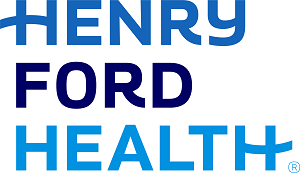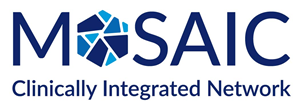Study: Gene Therapy Combined with IMRT for Prostate Cancer
Gene therapy combined with IMRT found to reduce the rate of positive prostate biopsy after treatment for intermediate-risk prostate cancer patients
Quality of life and toxicity measures also favorable
Fairfax, Va., June 2, 2014—Combining oncolytic adenovirus-mediated cytotoxic gene therapy (OAMCGT) with intensity modulated radiation therapy (IMRT) reduces the risk of having a positive prostate biopsy two years after treatment in intermediate-risk prostate cancer without affecting patients’ quality of life, according to a study published in the June 1, 2014 edition of the International Journal of Radiation Oncology ? Biology ? Physics (Red Journal), the official scientific journal of the American Society for Radiation Oncology (ASTRO).
Previous prospective clinical trials in prostate cancer have shown that increasing the standard radiation dose of 70 Gy by 10 to 15 percent improves the biochemical disease-free survival in some prognostic risk groups; however, more than 25 percent of men with intermediate- or high-risk disease develop prostate-specific antigen (PSA) progression within 10 years, suggesting that radiation doses higher than 80 Gy may be necessary. This prospective randomized phase II trial examines the use of OAMCGT to improve the effectiveness of IMRT without increasing the radiation dose in intermediate-risk prostate cancer.
Based on encouraging results from a prior phase I trial, 44 patients were enrolled in this randomized phase II trial from January 2008 to July 2010. Patients were randomized to receive either OAMCGT with IMRT (21) or IMRT alone (23), and outcomes were focused on toxicity, quality of life and prostate biopsy findings at two years post-treatment. Eligible patients had newly diagnosed, clinically localized, intermediate-risk prostate cancer, defined as clinical stage T1/T2 with a Gleason score of 7 or a PSA of 10 to 20 ng/ml. Patients with a Gleason score of 5/6, a PSA <10 ng/ml and ≥50 percent positive biopsy cores were also eligible because it has been found that these patients tend to respond biochemically similar to patients with intermediate-risk disease. Of the 44 patients analyzed in this study, 82 percent (36) had stage T1 disease and 18 percent (8) had stage T2 disease. Sixteen percent (7) had a Gleason score of 6 and 84 percent (37) had a Gleason score of 7.
All patients were treated with IMRT (80 Gy in 2.0 Gy fractions over eight weeks). Patients who were treated with OAMCGT in addition to IMRT also received a single intraprostatic injection of 1 x 1012 viral particles of the Ad5-yCD/mutTKSR39rep-ADP adenovirus on the first day of treatment. Two days later, patients in the OAMCGT arm began IMRT treatment and received 5-FC (150 mg/kg/day, four times per day) and vGCV (1,800 mg/kg/day, twice daily) orally five days a week for two weeks.
Toxicity was assessed once a week during treatment. After completion of treatment, follow-up was conducted every three months for the first year post-treatment, at 18 and 24 months and then annually thereafter. Quality of life (QOL) was assessed at six, 12, 24 and 36 months post-treatment using the validated Expanded Prostate Cancer Index Composite (EPIC) and EuroQol EQ-5D instruments. A 12-core prostate biopsy was taken at 24 months post-treatment. Biopsies were examined by two pathologists blinded to the study treatments.
Gastrointestinal (GI) and genitourinary (GU) toxicity are the most common side effects of prostate radiation therapy. In this study, 5 percent of men (1) in the OAMCGT arm and 9 percent (2) in the IMRT alone arm experienced grade 2 or higher acute (≤90 days) GI toxicity. Grade 2 or higher acute GU toxicity was more prevalent in both arms, with 43 percent (9) in the OAMCGT arm and 31 percent (7) in the IMRT alone arm; however, there was no statistical significance in acute GI or GU toxicity between the two arms. Men in the OAMCGT arm experienced a higher occurrence of influenza-like symptoms, which were expected and attributed to the oncolytic adenovirus.
The sole significant difference in QOL in the EPIC domains (urinary incontinence, unitary irritation/obstruction, bowel, sexual, hormonal and overall satisfaction) at six months post-treatment was the sexual domain, which was better in the OAMCGT arm. The only significant difference in the EQ-5D domains (mobility, self-care, usual activities, pain and discomfort, anxiety and depression, and health state) was self-care at 24 months post-treatment, which was better in the OAMCGT arm.
An important outcome was prostate biopsy at two years post-treatment, which is prognostic of long-term results. In this study, 84 percent (37) of patients had two-year biopsies. For men in the OAMCGT arm, there was a 42 percent relative reduction in positive biopsy at two years, and a 60 percent relative reduction in men with <50 percent positive biopsy cores at baseline. At the time of this study’s findings, one patient in each arm had exhibited biochemical failure (4.8 percent in the OAMCGT arm and 4.3 percent in the IMRT alone arm). The events occurred 14.5 months post-treatment in the OAMCGT arm and 13.8 months post-treatment in the IMRT alone arm. No patients had developed hormone-refractory or metastatic disease, and no patients died from prostate cancer.
“The study’s results demonstrate that gene therapy generated few noticeable side effects and did not diminish the patient’s quality of life when combined with modern radiation therapy. Moreover, a greater percentage of men who received gene therapy and radiation had negative prostate biopsies two years after treatment relative to men who received radiation alone,” said Svend O. Freytag, Ph.D., lead author of the study and division head of biology research in the department of radiation oncology at Henry Ford Hospital in Detroit. “Our findings suggest that gene therapy has a potential role as a strategy to enhance outcomes, along with radiation therapy, while maintaining quality of life for our patients. This research helps open the door for further studies of this novel combination therapy approach in prostate cancer and other disease sites.”
Sites included in the multi-phase study are Henry Ford Hospital and Johns Hopkins School of Medicine in Baltimore.
For a copy of the study manuscript, contact Brittany Ashcroft at (703) 839-7336, press@astro.org. For more information about the Red Journal, visit www.redjournal.org.
ABOUT ASTRO
ASTRO is the premier radiation oncology society in the world, with more than 10,000 members who are physicians, nurses, biologists, physicists, radiation therapists, dosimetrists and other health care professionals that specialize in treating patients with radiation therapies. As the leading organization in radiation oncology, the Society is dedicated to improving patient care through professional education and training, support for clinical practice and health policy standards, advancement of science and research, and advocacy. ASTRO publishes two medical journals, International Journal of Radiation Oncology • Biology • Physics (www.redjournal.org) and Practical Radiation Oncology (www.practicalradonc.org); developed and maintains an extensive patient website, www.rtanswers.org; and created the Radiation Oncology Institute (www.roinstitute.org), a non-profit foundation to support research and education efforts around the world that enhance and confirm the critical role of radiation therapy in improving cancer treatment. To learn more about ASTRO, visit www.astro.org.
.svg?iar=0&hash=F6049510E33E4E6D8196C26CCC0A64A4)

/hfh-logo-main--white.svg?iar=0&hash=ED491CBFADFB7670FAE94559C98D7798)







